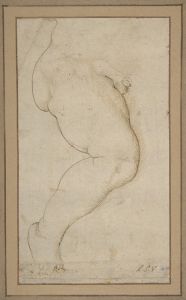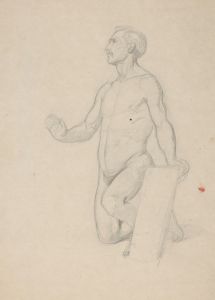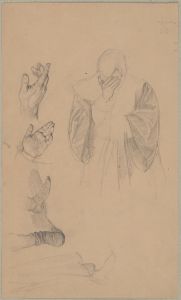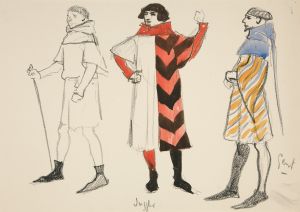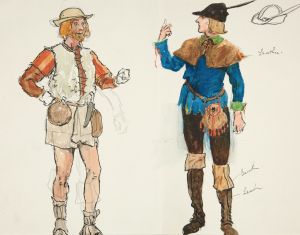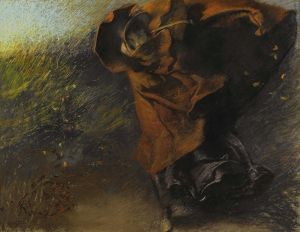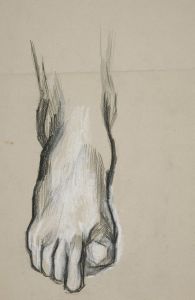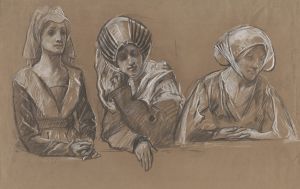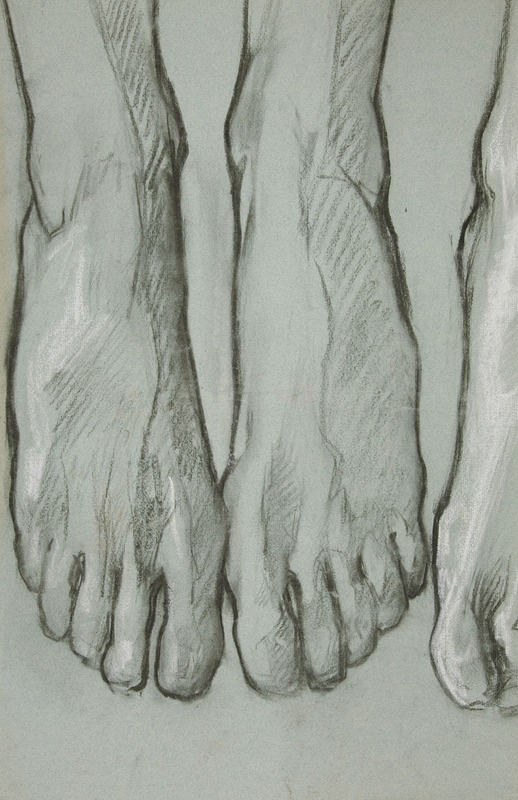
Sketch of three feet ; Sketch of one foot
A hand-painted replica of Edwin Austin Abbey’s masterpiece Sketch of three feet ; Sketch of one foot, meticulously crafted by professional artists to capture the true essence of the original. Each piece is created with museum-quality canvas and rare mineral pigments, carefully painted by experienced artists with delicate brushstrokes and rich, layered colors to perfectly recreate the texture of the original artwork. Unlike machine-printed reproductions, this hand-painted version brings the painting to life, infused with the artist’s emotions and skill in every stroke. Whether for personal collection or home decoration, it instantly elevates the artistic atmosphere of any space.
Edwin Austin Abbey was an American artist known for his illustrations and paintings, particularly those depicting Shakespearean and Victorian subjects. Born in 1852 in Philadelphia, Abbey developed his artistic skills at the Pennsylvania Academy of the Fine Arts. He later moved to England, where he spent much of his career and became associated with the Pre-Raphaelite Brotherhood and the Royal Academy.
"Sketch of Three Feet; Sketch of One Foot" by Edwin Austin Abbey is a lesser-known work that reflects his keen interest in detailed studies and preparatory sketches. Abbey was meticulous in his approach to art, often creating numerous sketches and studies before executing a final piece. This particular sketch is an example of his dedication to understanding the human form, a common practice among artists who wish to capture the nuances of anatomy and movement.
The sketch likely served as a preparatory study for a larger work or as an exercise in mastering the depiction of feet, which are notoriously challenging for artists due to their complex structure and the subtlety required to render them convincingly. Abbey's attention to detail and commitment to realism are evident in the careful observation and rendering of the feet in this sketch.
Abbey's work was highly regarded during his lifetime, and he received numerous commissions for murals and illustrations. He was elected to the National Academy of Design in 1902 and became a full member of the Royal Academy in 1898. His contributions to art were recognized with various honors, including being made a Royal Academician.
While "Sketch of Three Feet; Sketch of One Foot" may not be as famous as some of Abbey's other works, such as his illustrations for Shakespeare's plays or his murals for the Boston Public Library, it is a testament to his skill as a draftsman and his dedication to the study of form. Abbey's sketches and studies are valuable for understanding his artistic process and the methods he employed to achieve the high level of detail and realism for which he is known.
Abbey's legacy continues to be appreciated by art historians and enthusiasts who admire his ability to blend narrative content with meticulous detail. His work remains a significant part of American and British art history, reflecting the cultural and artistic exchanges between the two countries during the late 19th and early 20th centuries.
In summary, "Sketch of Three Feet; Sketch of One Foot" exemplifies Edwin Austin Abbey's commitment to the study of human anatomy and his skill in draftsmanship. While not as widely recognized as his larger compositions, this sketch provides insight into the artist's process and his dedication to capturing the intricacies of the human form. Abbey's work continues to be celebrated for its technical proficiency and narrative depth.





